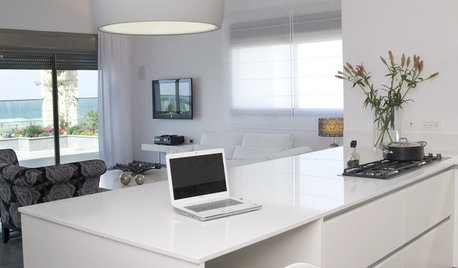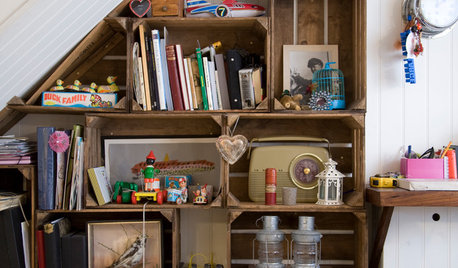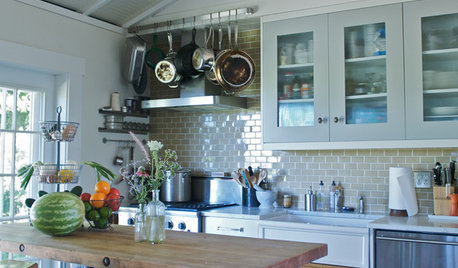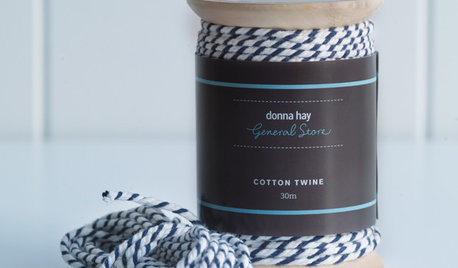Storing apples
rosefolly
15 years ago
Related Stories

HOME TECHThanks, Steve: Apple-Inspired Design at Home
See how the Mac and iPod aesthetic synchs up with today's house
Full Story
EDIBLE GARDENSHow to Add an Apple Tree to Your Edible Garden
Readily available, beautiful and fragrant, apple trees offer four-season interest along with crisp, juicy fruit
Full Story
PRODUCT PICKSGuest Picks: An Apple a Day
20 products to help your iPad, iPhone and other Apple gadgets feel right at home
Full Story
VINTAGE STYLEFlea Market Find: Apple Crates
If life gives you apples, reuse the vintage crates they came in to decorate your home
Full Story
LIVING ROOMSRoom of the Day: A Family Living Space for Weekends in the Big Apple
A Long Island couple create a family-friendly and stylish New York City retreat where they can unwind and entertain
Full Story
DECORATING GUIDES10 Design Ideas From the Bucket Section of the Hardware Store
These hardworking home essentials will add character galore and keep clutter at bay in modern-rustic style
Full Story
ORGANIZINGPre-Storage Checklist: 10 Questions to Ask Yourself Before You Store
Wait, stop. Do you really need to keep that item you’re about to put into storage?
Full Story
KITCHEN DESIGNShow, Don't Store, Your Kitchenware
Hide silverware, linens and more in plain sight for attractive kitchen organizing
Full Story
PRODUCT PICKSGuest Picks: The Modern General Store
20 practical pieces that look good and work hard at the same time
Full Story
MOST POPULARWhy We Love Midcentury Modern Design
There's a method to all this 'Mad Men'-ness — just look to psychology, tough times and, believe it or not, Apple
Full StoryMore Discussions








myk1
glib
Related Professionals
Ilchester Landscape Architects & Landscape Designers · Billerica Landscape Contractors · Wake Forest Landscape Contractors · Bridgeview Landscape Contractors · Broadlands Landscape Contractors · East Lake-Orient Park Landscape Contractors · Eustis Landscape Contractors · Farmington Landscape Contractors · Kahului Landscape Contractors · Little Ferry Landscape Contractors · Peachtree City Landscape Contractors · Santa Maria Landscape Contractors · Shoreview Landscape Contractors · Webster Groves Landscape Contractors · Woodland Landscape Contractorssqueeze
Axel
glib
myk1
rosefollyOriginal Author
glib
rosefollyOriginal Author
glib
myk1
jellyman
Axel
Axel
rosefollyOriginal Author
glib